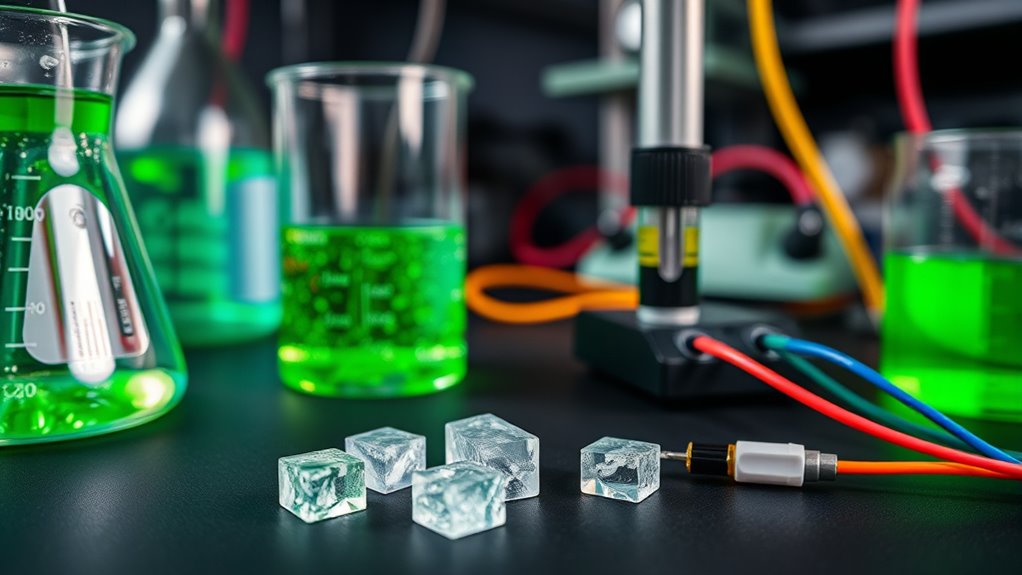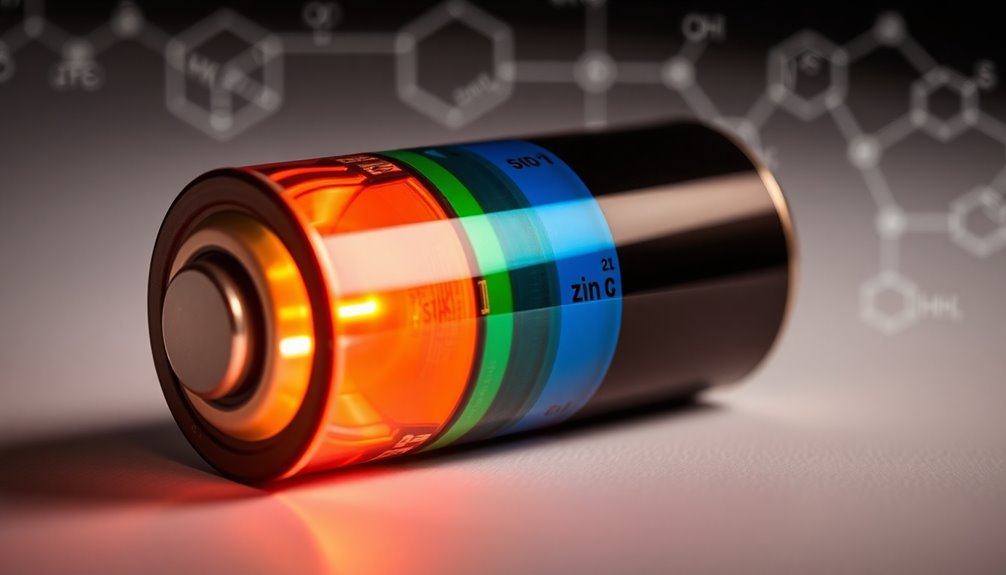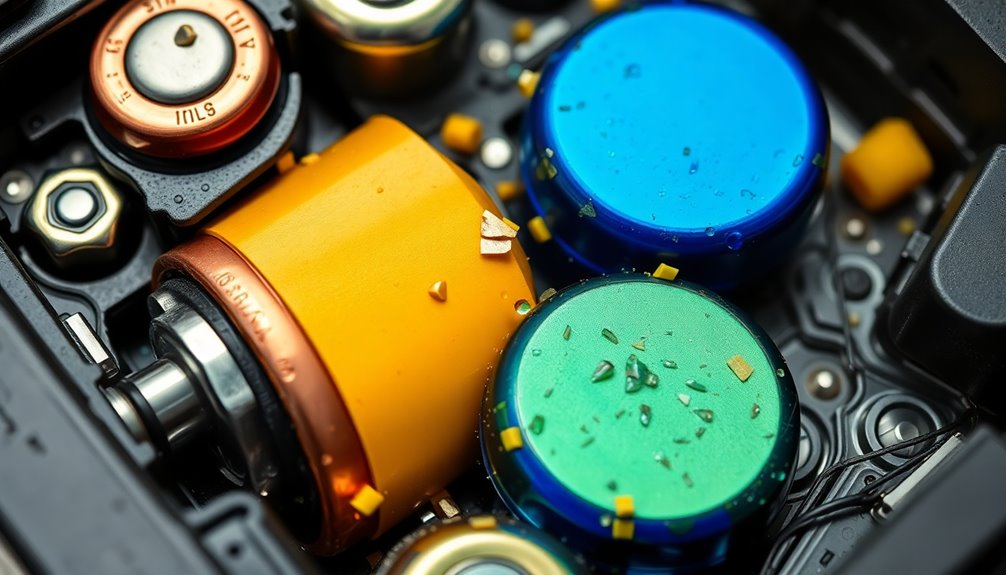Green electrolytes, including solid and aqueous types, are key to creating sustainable energy storage systems that reduce environmental harm and improve safety. They are made from renewable, eco-friendly materials and support eco-conscious manufacturing processes. These electrolytes lower the carbon footprint of production and help prevent chemical hazards during use. Their development promotes safer, more efficient batteries and is essential for future eco-friendly energy solutions. Keep exploring to discover how these innovations are shaping a greener energy landscape.
Key Takeaways
- Development focuses on eco-friendly materials derived from renewable sources for solid and aqueous electrolytes.
- Green electrolytes enhance safety, reduce hazards, and extend the lifespan of energy storage devices.
- Incorporating sustainable synthesis methods minimizes environmental impact during production.
- Solid and aqueous green electrolytes facilitate the integration of renewable energy and eco-conscious battery technologies.
- Advancements support global sustainability goals by reducing carbon footprints and promoting eco-friendly energy solutions.

Have you ever wondered how to make energy storage more sustainable? The key lies in developing green electrolytes, which are essential components in batteries and other energy storage devices. These electrolytes can be made from sustainable materials that minimize environmental impact and promote eco-friendly synthesis processes. By focusing on greener alternatives, you help reduce reliance on hazardous chemicals and decrease the carbon footprint associated with manufacturing traditional electrolytes. Using sustainable materials not only benefits the environment but also enhances the safety and longevity of energy storage systems. Additionally, incorporating eco-friendly materials into electrolyte development is crucial for advancing sustainable energy technologies.
Frequently Asked Questions
How Do Green Electrolytes Impact Overall Device Sustainability?
Green electrolytes boost overall device sustainability by offering environmental benefits and promoting resource conservation. When you choose these eco-friendly options, you reduce harmful waste and lessen reliance on scarce or toxic materials. This not only lowers the environmental footprint of your devices but also encourages sustainable manufacturing practices. As a result, green electrolytes help create longer-lasting, more eco-conscious technologies that support a healthier planet.
What Are the Cost Implications of Developing Green Electrolytes?
Developing green electrolytes is like planting seeds for a sustainable future, but it requires careful cost analysis. You’ll face initial higher expenses due to research, materials, and scaling production. However, as market potential grows, costs tend to decrease, turning investments into long-term gains. Your focus on eco-friendly options could lead to cost-effective solutions, making devices more affordable and appealing to a conscious consumer base, ultimately fueling widespread adoption.
How Do Green Electrolytes Compare in Performance to Traditional Options?
Green electrolytes generally perform on par with traditional options in key performance metrics like ionic conductivity and energy density. They often exhibit enhanced stability considerations, especially in aqueous systems, which can lead to longer-lasting batteries. However, some may face challenges in matching the high-performance benchmarks set by conventional electrolytes. Overall, green electrolytes are promising, but ongoing research aims to optimize their performance for commercial applications.
Are Green Electrolytes Scalable for Commercial Applications?
You can definitely scale green electrolytes for commercial use despite manufacturing challenges and regulatory hurdles. While initial production may face hurdles like sourcing sustainable materials and meeting safety standards, ongoing research improves scalability and compliance. As these green options become more cost-effective and easier to produce, they’ll likely surpass traditional electrolytes, offering eco-friendly alternatives that are ready for large-scale deployment. Your commitment to sustainability can help overcome these barriers and accelerate adoption.
What Challenges Exist in Integrating Green Electrolytes Into Existing Systems?
You’ll face challenges with integrating green electrolytes into existing systems, mainly due to material compatibility and manufacturing stability. These electrolytes may react differently with current components, causing issues like corrosion or degradation. Additionally, maintaining consistent manufacturing processes can be tough, as green electrolytes might require new fabrication techniques or materials, making it difficult to guarantee long-term stability and performance without significant adjustments to your existing infrastructure.
Conclusion
You’ve seen how green electrolytes, both solid and aqueous, are paving the way for sustainable energy storage. notably, studies show that eco-friendly electrolytes can reduce environmental impact by up to 50% compared to traditional options. This progress not only supports cleaner energy solutions but also encourages widespread adoption of greener technologies. As development continues, you’ll be at the forefront of innovation, helping create a more sustainable future with safer, greener electrolytes leading the charge.










